Stay Focused: 7 Strategies to Avoid Distractions While Driving
As drivers, we all know that it’s important to stay focused on the road. However, with so many distractions around us, it can be difficult to keep our attention where it needs to be. From incoming calls and messages on our phones to eating, drinking, and even adjusting the radio, there are countless things that can take our eyes and minds off the road. Unfortunately, these distractions can have serious consequences, and it’s important to take steps to avoid them. In this post, we’ll share with you seven strategies that you can use to stay focused while driving, so that you can arrive at your destination safely and without incident. From creating a distraction-free environment to using technology to your advantage, we’ve got you covered.
1. Introduction: The importance of staying focused while driving
Introduction: The importance of staying focused while driving
When it comes to driving, staying focused is not just a recommendation, it is a critical requirement for safety on the road. Distractions while driving can lead to serious accidents, injuries, and even fatalities. In today’s fast-paced world, where we are constantly bombarded with notifications, calls, and other distractions, it is more important than ever to prioritize our attention and concentration while behind the wheel.
The consequences of distracted driving can be devastating. According to a report by the National Highway Traffic Safety Administration (NHTSA), distracted driving claimed the lives of 3,142 people in the United States in 2019 alone. Whether it’s texting, talking on the phone, eating, grooming, or even daydreaming, any activity that diverts your attention from the road poses a significant risk not only to yourself but also to other innocent motorists and pedestrians.
Staying focused while driving is about more than just obeying traffic laws. It’s about being fully present in the moment, anticipating potential hazards, and making split-second decisions that can save lives. In this section, we will explore seven strategies that can help you avoid distractions and maintain your focus while driving. By implementing these strategies, you will not only protect yourself and others on the road but also contribute to creating a safer driving environment for everyone. So let’s dive in and discover how you can stay focused behind the wheel and make every journey a safe one.
2. Understanding the dangers of distracted driving
Understanding the dangers of distracted driving is crucial for every driver. With the rise of technology and the constant need for connectivity, it has become more challenging to stay focused on the road. However, being aware of the potential risks can help us make better choices and prioritize safety.
Distracted driving refers to any activity that diverts a driver’s attention away from the task of driving. This can include texting, talking on the phone, eating, grooming, using in-car technologies, or even daydreaming. These seemingly innocent actions may seem harmless, but they significantly increase the likelihood of accidents.
One of the most alarming statistics related to distracted driving is the number of accidents it causes. According to the National Highway Traffic Safety Administration (NHTSA), in the United States alone, distracted driving claimed the lives of over 3,000 people in a single year. This number is not just a mere statistic; it represents lives lost, families shattered, and the devastating aftermath of a momentary lapse in focus.
The dangers of distracted driving are not limited to fatalities alone. Even minor distractions can lead to serious injuries, property damage, and legal consequences. Taking your eyes off the road for just a few seconds can mean the difference between a safe arrival and a life-changing crash.
Moreover, distracted driving affects not only the driver but also passengers, pedestrians, and other motorists sharing the road. It poses a significant threat to everyone’s safety, making it essential for each of us to take responsibility and commit to avoiding distractions while driving.
By understanding the potential dangers of distracted driving, we can develop a heightened sense of awareness and take proactive steps to eliminate distractions. It’s crucial to prioritize our safety, the safety of others on the road, and ensure that our focus remains solely on the task at hand – driving.
3. Strategy 1: Put away your phone and other electronic devices
One of the most common distractions while driving is the use of electronic devices, particularly smartphones. In today’s hyper-connected world, it’s easy to get caught up in constantly checking notifications, replying to messages, or browsing social media feeds. However, these distractions can have serious consequences on the road.
To avoid falling into this trap, it’s crucial to implement Strategy 1: Put away your phone and other electronic devices. This means keeping your phone out of sight and reach while driving, preferably in a place where you can’t easily access it, like the glove compartment or in a bag in the backseat.
By doing this, you eliminate the temptation to glance at your phone when a notification pops up or when you hear the familiar sound of a message coming in. Instead, focus your attention solely on the road ahead and the task at hand – driving safely.
To reinforce this strategy, you can also activate the “Do Not Disturb” mode or enable driving mode on your smartphone. These features can automatically silence incoming calls and notifications, ensuring that you won’t be tempted to pick up your phone while driving.
Remember, the risks of using your phone while driving are far too great to ignore. It only takes a split second of distraction to cause a life-altering accident. By putting away your phone and other electronic devices, you not only prioritize your safety but also set a responsible example for others on the road.
So, before starting your engine, make it a habit to stow away your phone and any other electronic devices. This simple action can go a long way in keeping you focused, alert, and free from distractions while driving. Your safety, as well as the safety of others, depends on it.
4. Strategy 2: Plan your route and eliminate the need for navigation while driving
Strategy 2: Plan your route and eliminate the need for navigation while driving.
In this age of advanced technology, it’s tempting to rely on navigation apps to guide us to our destinations. However, constantly glancing at our phones or GPS devices while driving can be a significant distraction and compromise our safety on the road. That’s why it’s essential to plan your route before you start your journey and eliminate the need for navigation while driving.
Start by familiarizing yourself with the route you will be taking. If you’re going to a new place, spend a few minutes studying the map and identifying the key landmarks or intersections along the way. This will help you gain a general understanding of the directions, making it easier for you to stay focused and avoid getting lost.
Additionally, consider using a printed map or writing down turn-by-turn directions if necessary. Having a physical copy of your route can serve as a reliable backup in case of any technology glitches or signal loss. You can easily refer to it without taking your eyes off the road, ensuring your full attention remains on driving safely.
Another helpful tip is to adjust your vehicle’s settings or use voice commands to set up your route before you hit the road. Most modern cars come equipped with built-in navigation systems that can be programmed in advance. Take advantage of this feature to input your destination and get the directions ready before you start driving. By doing so, you won’t need to fiddle with your device while in motion, reducing distractions and increasing your focus on the road ahead.
Remember, the goal is to minimize any activities that divert your attention away from driving. By planning your route and eliminating the need for navigation while driving, you can stay focused, maintain a clear mind, and ensure a safer journey for yourself and others on the road.
5. Strategy 3: Avoid engaging in complex conversations or arguments
To ensure a safe and focused driving experience, it’s essential to avoid engaging in complex conversations or arguments while behind the wheel. When driving, your primary responsibility is to concentrate on the road and your surroundings. Engaging in intense discussions or heated arguments can divert your attention and compromise your ability to react quickly to potential hazards.
Complex conversations require mental and emotional energy, which can significantly affect your concentration levels. It’s best to save these conversations for a more appropriate time and place, where you can give them the attention they deserve.
If you find yourself in a situation where a conversation becomes heated or emotionally charged, it’s important to prioritize your safety and the safety of others on the road. Politely let the other person know that you are unable to continue the conversation at the moment and that you will address it later when you can give it your full attention.
Remember, distractions come in many forms, and engaging in complex conversations or arguments while driving is an avoidable one. By being mindful of your focus and prioritizing safety, you can create a calm and distraction-free environment that allows you to navigate the road with ease.
6. Strategy 4: Take care of personal grooming and other distractions before getting in the car
To ensure a safe and focused driving experience, it is essential to take care of personal grooming and eliminate any potential distractions before getting behind the wheel. While it may be tempting to use driving time to apply makeup, style your hair, or shave, engaging in these activities while driving can significantly increase the risk of accidents.
Taking care of personal grooming tasks before entering the vehicle not only ensures your safety but also allows you to concentrate solely on the road ahead. Wake up a few minutes earlier to allocate enough time to complete your grooming routine at home. This way, you can focus solely on driving and avoid the temptation of multitasking while on the road.
Additionally, it is crucial to address other distractions before starting the journey. Make sure to silence or switch off your mobile phone to prevent the temptation of checking notifications or responding to messages while driving. Set your GPS or navigation system prior to starting your trip to minimize the need for adjustments while on the road.
Lastly, organize your belongings and secure any loose items before getting into the car. Loose objects can become dangerous projectiles in the event of sudden braking or collision. By ensuring that all personal items are properly stowed, you eliminate the potential for distraction caused by objects rolling or sliding around the vehicle.
By implementing these strategies and taking care of personal grooming and other potential distractions before getting in the car, you can create a focused and safe environment for yourself and others on the road. Remember, prioritizing safety should always be the top priority while driving.
7. Strategy 5: Avoid eating or drinking while driving
Eating or drinking while driving may seem like a convenient way to save time, especially during a hectic schedule. However, it can pose significant distractions and increase the risk of accidents on the road. As tempting as it may be, it’s crucial to avoid indulging in meals or beverages while behind the wheel.
When you eat or drink while driving, your attention becomes divided between handling the food or beverage and focusing on the road ahead. This can lead to decreased awareness of your surroundings, delayed reaction times, and compromised control of the vehicle. Even simple actions like taking a sip of coffee or unwrapping a sandwich can cause momentary lapses in concentration, which may have severe consequences.
Additionally, spills or dropped items can cause sudden movements or obstructions within the vehicle, further diverting your attention from the road. Attempting to clean up a mess or retrieve a fallen object can result in taking your eyes off the road for more extended periods, increasing the likelihood of accidents.
To avoid the temptation of eating or drinking while driving, it’s essential to plan ahead. Consider having your meals or snacks before or after your journey, ensuring you are adequately nourished and hydrated. If necessary, make pit stops at safe locations to eat or drink, allowing yourself to focus solely on consuming your meal without compromising your safety.
It’s worth noting that many jurisdictions have implemented laws and regulations regarding eating or drinking while driving, considering it a form of distracted driving. Violating these laws can result in fines, penalties, or even legal consequences. By refraining from eating or drinking while driving, you not only prioritize your safety but also adhere to legal obligations.
Remember, the road requires your full attention, and any distractions, including eating or drinking, can have severe consequences. By avoiding these activities, you’ll maintain your focus, enhance your reaction times, and contribute to a safer driving environment for yourself and others on the road.
8. Strategy 6: Limit multitasking and focus on the road
When it comes to driving, multitasking can be incredibly dangerous. It’s tempting to try and accomplish other tasks while behind the wheel, such as eating, texting, or even applying makeup. However, these distractions can have serious consequences.
Strategy 6: Limit multitasking and focus on the road.
One of the most effective strategies for avoiding distractions while driving is to limit multitasking. This means committing to focusing solely on the road and not engaging in any other activities that divert your attention away from driving safely.
Start by eliminating any potential distractions within your vehicle. Put your phone on silent or better yet, keep it out of reach. If you need to make a call or send a text, pull over to a safe location. Avoid eating or drinking while driving, as it requires taking your hands off the wheel and your eyes off the road.
Remember, multitasking may give you the illusion of being more productive, but it significantly impairs your ability to react quickly and make split-second decisions on the road. By limiting multitasking and prioritizing your attention on driving, you are ensuring the safety of yourself, your passengers, and others sharing the road with you.
Stay focused and keep your eyes on the road – it’s the best strategy to avoid distractions and arrive safely at your destination.
9. Strategy 7: Practice mindfulness and stay present while driving
Strategy 7: Practice mindfulness and stay present while driving
Mindfulness is not only a powerful practice for maintaining focus and reducing stress in our everyday lives, but it can also be a valuable tool to enhance our driving experience. When we practice mindfulness while driving, we fully engage with the present moment, allowing us to become more aware of our surroundings and make better decisions on the road.
To practice mindfulness while driving, start by taking a few deep breaths before you start your car. Allow yourself a moment to let go of any stress or distractions from your day and bring your attention to the present moment. As you begin driving, bring your focus to the sensations of the road beneath you, the sound of the engine, and the movements of your body as you navigate through traffic.
It’s natural for our minds to wander, especially during long drives or monotonous stretches of road. When you notice your thoughts drifting away, gently bring your attention back to the present moment. Avoid getting lost in daydreams or worrying about future events, as this can take your focus away from the road and increase the risk of accidents.
Another aspect of practicing mindfulness while driving is to resist the urge to multitask. It may be tempting to check your phone, adjust the radio, or eat a quick snack, but these distractions can significantly impair your ability to react quickly and make split-second decisions. Remember that driving requires your full attention, so save these activities for when you’ve safely arrived at your destination.
Additionally, being mindful of your emotions while driving can also help you stay focused. Road rage and frustration can cloud your judgment and lead to aggressive behavior. Instead, try to cultivate a sense of calm and patience on the road. Take deep breaths, remind yourself that everyone is just trying to get to their destination, and let go of any negative emotions that may arise.
By incorporating mindfulness into your driving routine, you can foster a safer and more enjoyable experience on the road. So, the next time you buckle up and start your engine, remember to practice mindfulness, stay present, and keep distractions at bay. Your safety and the safety of others depend on it.
10. Conclusion: Committing to safe and focused driving habits
In conclusion, committing to safe and focused driving habits is essential for both your own well-being and the safety of others on the road. By implementing the strategies outlined in this article, you can significantly reduce distractions and maintain your focus while driving.
Remember to always prioritize safety by keeping your phone out of reach and using hands-free devices if necessary. Minimize any potential distractions by pre-setting your GPS, adjusting mirrors and seat positions before starting your journey, and familiarizing yourself with the route beforehand.
Additionally, practicing self-discipline and avoiding any activities that divert your attention from the road is crucial. Whether it’s eating, grooming, or engaging in intense conversations, it’s best to save these activities for when you’ve reached your destination.
Creating a calm and conducive environment inside your vehicle is also important. Keep the cabin clean and organized, and ensure that items are securely stored to prevent them from becoming projectiles in the event of sudden braking or impact.
Furthermore, it’s advisable to take regular breaks during long drives to combat fatigue and maintain alertness. Use these breaks to stretch your legs, hydrate, and refresh your mind before getting back on the road.
Lastly, remember that distractions can come in many forms, not just electronic devices. It’s essential to remain mindful of your surroundings and stay focused on the task at hand – driving safely. By doing so, you contribute to creating a safer and more pleasant driving experience for everyone.
Incorporate these strategies into your driving routine and make a commitment to prioritize safe and focused driving habits. By doing so, you can help prevent accidents, save lives, and ensure that each journey you take is a smooth and secure one.
We hope you found our blog post on strategies to avoid distractions while driving informative and helpful. Driving requires our full attention, and distractions can pose serious risks on the road. By implementing these 7 strategies, you can stay focused and greatly reduce the chances of accidents or near-misses caused by distractions. Remember, safety should always be the top priority when behind the wheel. Stay focused, drive responsibly, and arrive at your destination safely each and every time.


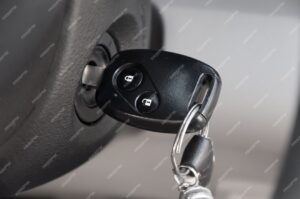
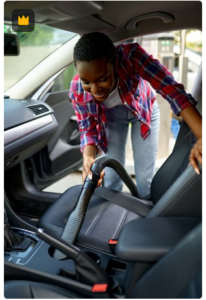

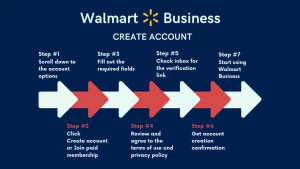
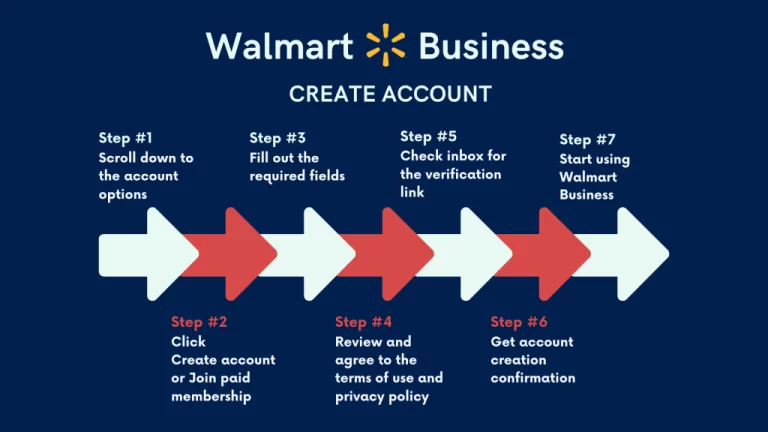

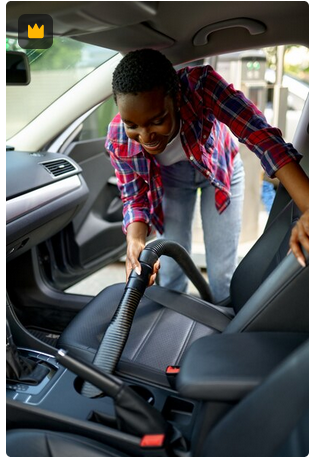


+ There are no comments
Add yours